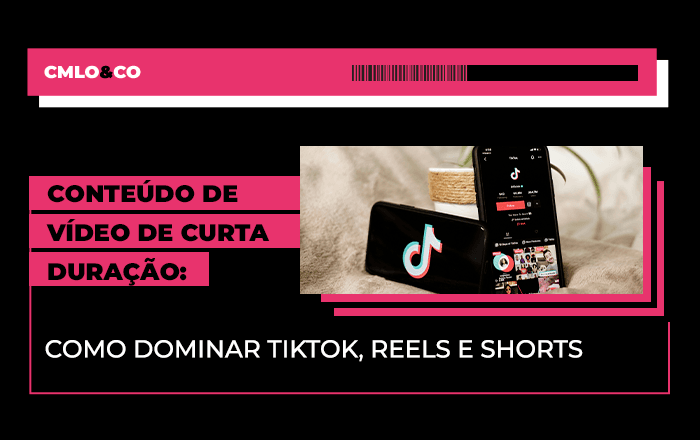Have you ever been moved by an advertisement? Have you ever been inspired by a brand's story of overcoming? Have you ever identified with a character who faces the same challenges as you? If the answer is yes, you've probably been impacted by the storytelling in advertising.
But what does this term mean? In a nutshell, storytelling is the art of storytelling. But not just any stories. They are stories that have a purpose, a message, an objective. They are stories that create emotional connections between the teller and the listener, in other words, between the brand and the audience.

In this article, we'll explain what storytellingWhat are its objectives, advantages for brands and how can they best apply the strategy? Read on!
What is storytelling?
Although it is among the marketing trends According to the latest research, storytelling is an ancient technique that emerged along with humanity itself. After all, since ancient times, people have used stories to communicate, transmit knowledge, culture, values and beliefs.
Marketing is no different. Storytelling in advertising becomes a way of telling the story of the brand, its products, its values and its mission. In other words, it's a way of showing the public what the brand stands for, what it offers and how it can help solve their problems.
But make no mistake, storytelling is not just a way of informing or persuading. On the contrary, it's a way of involving, moving, inspiring and enchanting. It's an opportunity to create emotional bonds and lasting relationships with customers.
The importance of storytelling in advertising
Storytelling is important in digital advertising because it helps to differentiate the brand from the competition, generate perceived value and increase customer loyalty.
In an increasingly competitive and information-saturated market, brands need to stand out and communicate effectively with their target audience.
Nowadays, it's not enough just to offer a quality product or service. You need to offer a unique experience that makes sense to the customer and is aligned with their values and aspirations.
Storytelling in advertising helps to create this experience because it allows the brand to tell its story in an authentic, creative and relevant way. It allows the brand to show its purpose, its essence and its personality, creating its own identity that is recognized and remembered by the public.
In addition, the art of storytelling helps to generate perceived value for the customer, as it shows the real and emotional benefits that the product or service can provide. In other words, it shows how the product or service can improve the customer's life, satisfy their needs and desires, solve their pains and frustrations.
Finally, the strategy helps to increase customer loyalty because it creates emotional connections between the brand and the public. This is because it makes the customer feel part of the brand's history, identifies with its values and principles, and trusts its credibility and reputation.
The results? With this strategy, your customer becomes a fan, an advocate and a promoter of your brand.
Why bet on strategy?
Betting on storytelling in advertising is a smart decision for brands that want to stand out in the market and win over more customers. This is because the strategy brings several benefits to companies, such as:
- It increases public engagement, because stories arouse people's attention, curiosity and interest. They make the public interact with the brand, share their opinions, feelings and experiences.
- It generates more credibility and trust, because the narratives show the truth behind the brand, its values, its differentials, its results. They show that the brand is not just interested in selling, but in offering real solutions to the public's problems.
- It stimulates memory and recognition, since stories are easier to remember than isolated facts. They create images, sounds, emotions and sensations in the public's mind and make the public associate the brand with these elements, which become part of their memory.
- It influences purchasing decisions because stories are more persuasive than rational arguments. After all, they appeal to the emotional side of the public, which is what most influences their decisions. They show the benefits that the product or service can bring to the public's life and how it can satisfy their needs and desires.
For these and other reasons, betting on a storytelling strategy is a way of differentiating yourself from the competition, adding value to your brand and increasing your sales.
And the market data proves it. According to a HubSpot surveyAccording to the survey, 79% of consumers would rather watch a video than read a text about a product. Another survey revealed that 92% of consumers want brands to create content that feels like a story.
5 types of storytelling to explore in your strategies
But how do you create good storytelling in advertising? There are several types of narrative that can be used in your communication strategies. Here are some examples:
- Fiction: this is when you create an imaginary story, which may or may not be inspired by fact, but which focuses on your product or service.
- Hero's Journey: is the narrative that presents a character who faces a problem, receives help, overcomes obstacles and achieves their goal.
- Idiot's Journey: a story that features a character who does something wrong or ridiculous, but learns a lesson at the end.
- Common enemy: this is when you present a problem or a villain that affects your audience or your own brand (competitor) and show how your product or service can help you combat it.
- Brand story: a type of narrative that tells the origin, values, mission and vision of your brand, showing how it relates to its audience and the world.
Storytelling in advertising: success stories
To better illustrate how storytelling can be used in advertising, we're going to present some successful cases of brands that knew how to tell creative and engaging stories that generated emotional connections with their audience.
Coca-Cola
Coca-Cola is one of the most famous and admired brands in the world. And this is largely due to its content marketing, which is mainly based on storytelling.
The company uses its stories to convey its values, such as happiness, friendship, diversity and sustainability. But it also uses fiction to incorporate culture into its strategies, turning a simple commercial into something magical and surprising.
Watch Coca-Cola's "Work of Art" campaign below:
Nike
Nike is another brand that stands out for its storytelling. The company uses its stories to inspire people to take part in sport, overcome their limits and make their dreams come true.
One example is the 2014 commercial "The Last Game", which shows how a group of soccer players rebel against a system that wants to change the rules of the game.
If you've already seen it, it's worth watching again! Play it below:
Dove
The "Portraits of Real Beauty" campaign by the Dove hygiene and beauty products brand is a real invitation for people to love themselves more. The aim is to create an emotional connection with the brand's audience and raise their self-esteem. Prepare your tissue and play:
Of course, these are just a few successful cases of storytelling in advertising to inspire you. In addition to these formats, there are many others that you can use in your communication strategies to delight your customers.
The important thing is to be authentic, creative and, above all, human. In other words, use real or believable stories that show the feelings, motivations, needs and desires of the people involved in your story.
The impact of storytelling on the customer's purchasing decision
Storytelling has a major impact on the customer's decision to buy, as it directly affects their behavior and emotions.
When applied to advertising, the strategy takes the customer through an emotional journey, which can be divided into four stages:
- Attention: storytelling captures the customer's attention because it creates a scenario, a conflict, a character and a goal. It thus arouses the curiosity and interest of the customer, who wants to know how the story will unfold.
- Empathy: the story generates empathy for the character, because it shows their characteristics, their feelings, their problems and their aspirations. It makes the customer identify with the character, put themselves in their shoes and hope for their success.
- Emotion: the narrative provokes emotion in the customer because it shows the obstacles, challenges, risks and opportunities that the character faces. In this way, it makes the customer feel the same emotions as the character, such as fear, anger, sadness, joy, surprise and admiration.
- Action: storytelling in advertising stimulates customer action because it shows the solution, the result, the reward and the lesson the character learns. It makes the customer take inspiration from the character's story and want to follow in their footsteps. In other words, it makes the customer make a purchasing decision in favor of the brand.
This emotional journey is fundamental in influencing the customer's decision to buy, as it creates a deep connection between the customer and the brand. This connection makes the customer trust the brand, value your product or service and become a loyal customer.
How to make a good storytelling?
Here's some advice:
- Know your audience: know who they are, what they want, what they feel, what they think and what the people you want to reach with your story do.
- Define your objective: know what message you want to convey with your story and what action you want to provoke in your audience.
- Choose the type of story: you can use fiction, the hero's journey or any other type, as long as it suits your objective and your audience.
- Choose your channel: define which medium is best suited to telling your story, whether it's a video, audio, text, image or a combination of these.
- Structure your story: follow a narrative logic that has a beginning, middle and end, and that presents the essential elements of a story, such as characters, conflicts, scenarios, dialogues and emotions.
- Be creative: use your imagination to create an original, interesting, engaging and memorable story that stands out from the rest and surprises your audience.
- Bet on authenticity: use your voice, your style and your personality to tell your story, without copying or imitating other stories or other brands.
- Be relevant: depending on the narrative, you can use data, facts, examples and references that support your story and are relevant to your audience and context.
- Use simplicity to your advantage: use clear, direct and accessible language to tell your story, without using technical terms, jargon or difficult words.
- Use extra resources to create emotional connections: use visual, audio and textual resources that arouse your audience's emotions, such as colors, sounds, music, images, metaphors and humor.
CMLO&CO and Storytelling: creating emotional connections between your brand and your customers
As you can see, storytelling in advertising is a powerful strategy for creating emotional connections between your brand and your customers. To do this, however, you need to tell creative and engaging stories that generate empathy, affinity, recognition, conversions and profit.
And to tell these stories, you can put into practice the tips we mentioned earlier. Or you can rely on CMLO&CO, marketing and advertising agency with extensive experience in digital.
If you want to tell your story in an effective and impactful way, talk to our experts. We'd love to be part of your story!







